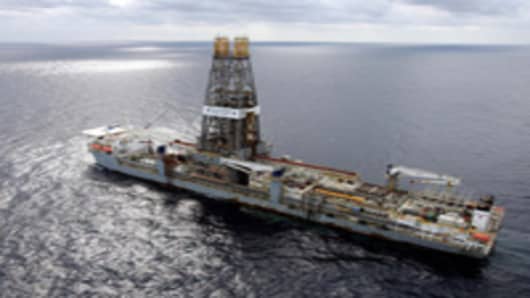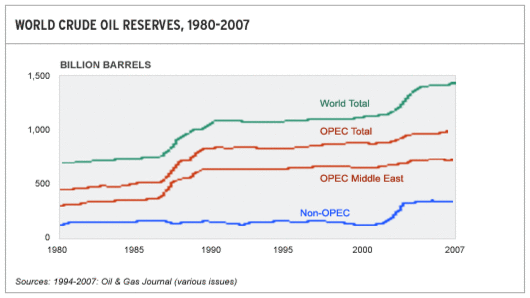Any shortages are driven by “human, not geological” factors, BP’s CEO Tony Hayward said in a statement accompanying the release of the June report. Hayward cited high taxes and barriers to access, adding that 80 percent of world’s oil is controlled by increasingly nationalistic governments.
That view is fairly consistent among the major players, says Doug Morris of the American Petroleum Institute.
New Technology
“The industry is fairly confident it can continue to develop and find new resources with the caveat that it is going to take a lot of new technology," says Morris, API's group director of upstream and industry operations.
“This industry has really, in the last 20 years, turned into a high-technology industry. There is lot more of science and technology used to develop the resources that we are finding now.”
“We certainly can’t rule out the possibility of further big finds; however, I think the likelihood is declining,” Jerroen van der Veer, CEO of Shell, recently told the Times of London, “What remains is in harsh frontier environments, such as deep oceans or the Arctic, where it is more difficult and more expensive to extract.”
This has been a factor in Shell opting to invest more in "unconventional" sources of oil, including the tar sands of Canada, which van der Veer said would account for 15 percent of the company's production by 2015, up from the 5 percent of today.
These trends make technological advances, both in exploration and production, all the more critical for an increasingly risk-averse and shareholder sensitive industry.
Limitations And Advances
But for all the high-powered geosciences advances, the energy industry is still far from its Holy Grail of being able to positively identify petroleum underground, except under the most ideal conditions.
At present, technology can generally only identify rock formations where petroleum is likely to be trapped.
That means exploration remains interpretative science, involving the analysis of huge volumes of data, which itself is only manageable through newly expanded computing power, explains Alan Petzet, chief exploration editor of the Oil and Gas Journal.
Still, there are impressive advances. “Cable-free” land acquisition, a version of seismic data collection using radio transmissions, promises to greatly reduce the cost of seismic collection on land, which is actually more expensive than at sea.
The useful life of the declining North Sea oil fields, for instance, is being extended by seismic data collected through a technique known as "‘wide azimuth acquisition off-shore" which employs two boats rather than one.
“One guy actually told me that he thinks this will make all previously acquired off-shore data obsolete because this is so much better,” says Clark.
The same dynamic is happening on land. Production from a huge Texan oil basin has been extended after scientists determined how to collect seismic data from under the Dallas-Ft. Worth airport.
“That’s amazing because when you are doing seismic, your enemy is noise of any kind, and what’s noisier than an airport, other than a battlefield,” says Clark.
Reserve Recovery
It also illustrates another key industry trend — the focus on boosting recovery rates.
Typically this was just 30 percent, but better reservoir management has boosted the rate to 35 to 40 percent.
Some of the improvement comes from a range of enhanced oil recovery (EOR) techniques that pump water or carbon dioxide into wells to flush out more oil. Chemicals are also being used to help scrub oil from the rocks.
A critical tool in these efforts is 4D seismic — in which time is the fourth dimension. It uses 3D data taken at time intervals to track shifting pressures and oil movements as the field is drained.
Production improvements, such as horizontal drilling, are also critical and continually being refined.
That’s critical for producing oil in the Bakken Formation in Montana and North Dakota — the site of the biggest domestic production boom in recent years, which got a boost when the US Geological Survey confirmed in April that there is probably 3.65 billion barrels of oil and 1.85 trillion cubic feet of gas.
There, drill bits are sunk several thousand feet before they are turned horizontal for another few thousand feet to tap into a thin layer of oil-bearing rock in the Williston Basin.
Then there is the genuinely outside-the-box thinking about the industry’s challenge.
One new idea is based on “very strong evidence” that not all petroleum is biotic — from decayed biological material — and that the underground presence of microbes that can live on petroleum can indicate the likelihood of larger deposits nearby, explains Robert Hazen, a senior staff scientist at the Carnegie Geophysical Laboratory.
“It is one of the prospecting tools, so rather than using seismic waves or exploratory holes or looking at geological structure, you look for bugs — it’s just a great idea.”





